Players draw tokens and place them on the board. The player with the most tokens in the room on the board gets points.
I played with Thai Taro in a two-player game.
It's a rewarding game.
Overview
The board is double-sided. One side is for 2 players only. The rules are the same.
Players place a tile in the corner to indicate the starting point and place the first token on it.
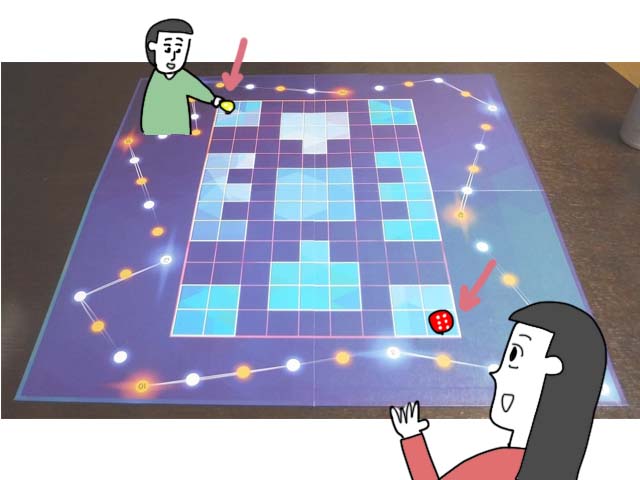
On the turn, the player draws a token from his own black bag and places it.
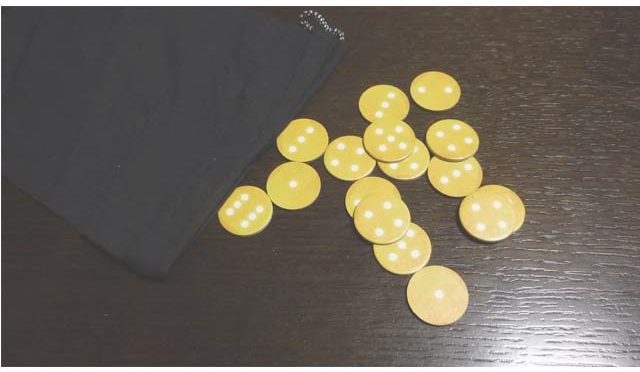
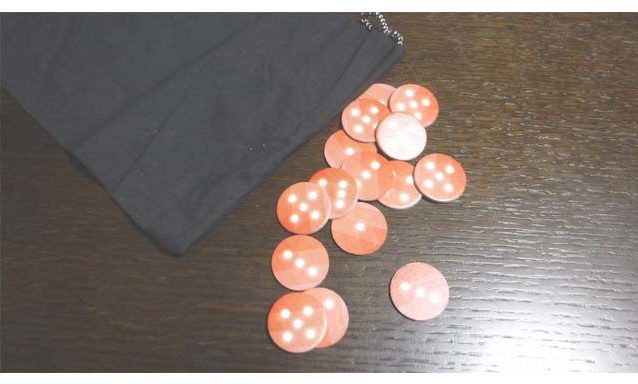
About tokens
Numbers from 1 to 6 are written on the token.
There are three types of tokens, 1-6, 2-5, and 3-4.
8 each. 24 in all.
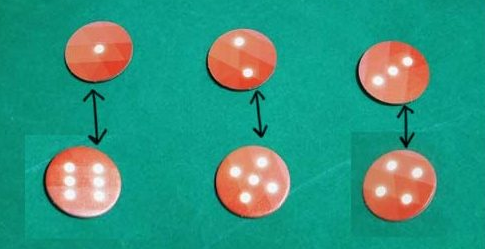
How to place tokens
Players can place new tokens at the distance (vertical and horizontal) by the number starting from their token on the board.
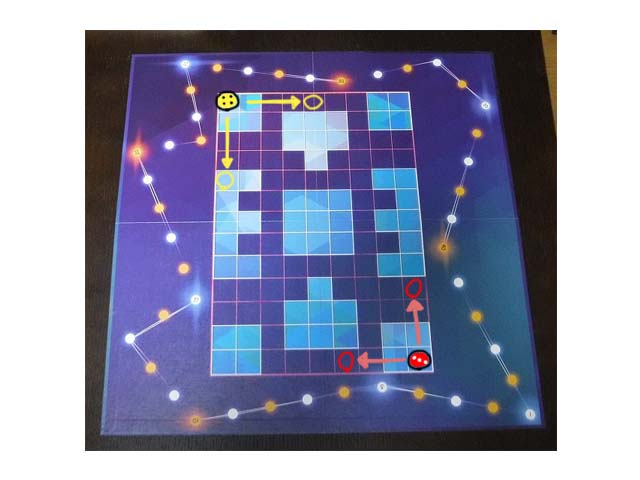
Players can stack enemy tokens or their own tokens. But it can't be overlapped where two overlap.
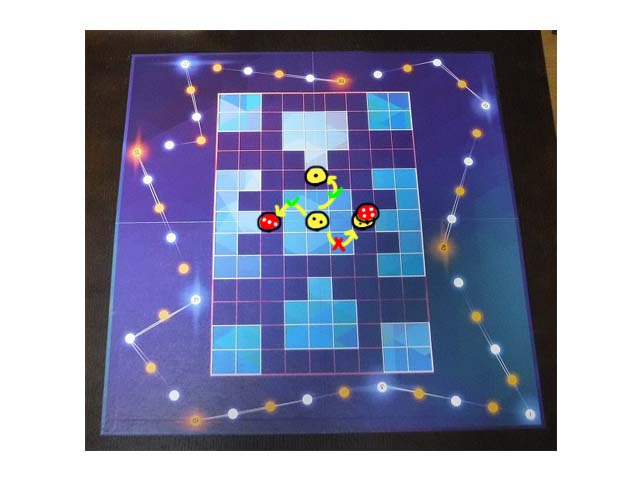
The purpose of the game
Put a lot of your tokens in the room on the board. The person with the highest total token numbers gets victory points.
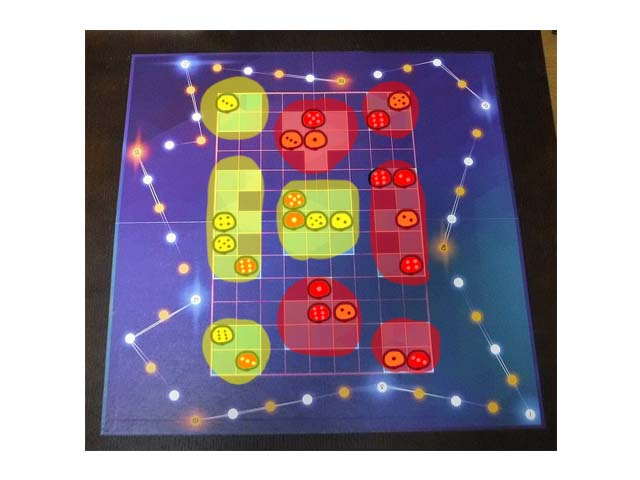
If you play 2 players, it will be a game that aims to get 5 or more out of 9 rooms.
Final thoughts
I remember the "Nuggets" and the "Samurai" designed by Kunitzia when it comes to games where tokens have different numbers and players who put in more numbers get points in the area.
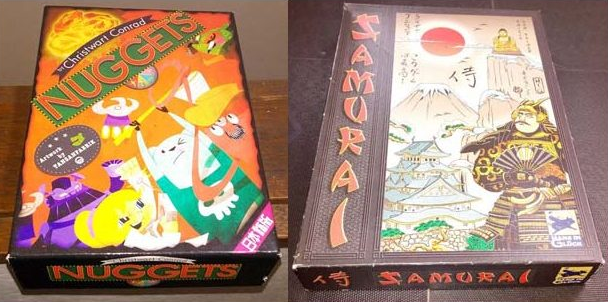
I read the rules and thought it was like those, but it was completely different.
First of all, the difference is that there are numbers on both sides of the token in "Glux".
If it's a game that depends on the size of the numbers, you'll think 6 is the strongest. In fact, in "nuggets" and "samurai", tiles with large numbers were important.
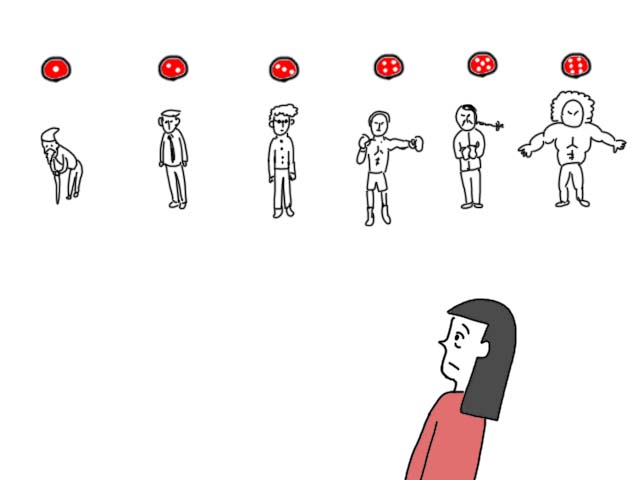
Isn't 6 the strongest?
But in Glux, the back of 6 is 1. You can choose either 6 or 1 when placing.
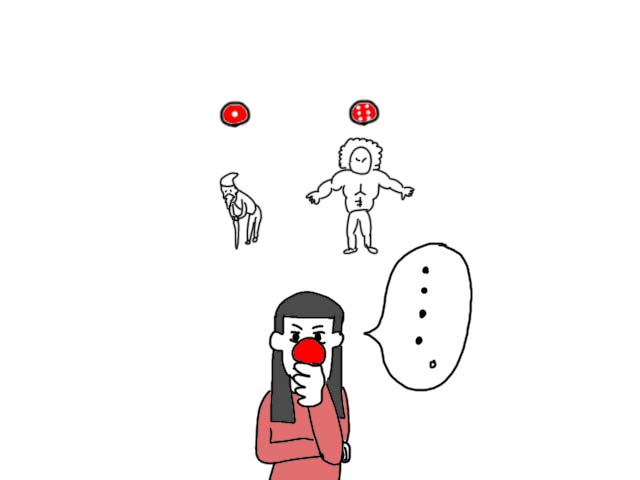
Hmm? Does that mean 1 is as strong as 6 despite the game of competing for the sum of the numbers in the room?
I intuitively felt such a thing. I still didn't understand why.
And when I started the game, I could easily put a token in a nearby room with the first move. From there I was able to move the token directly to the next room.
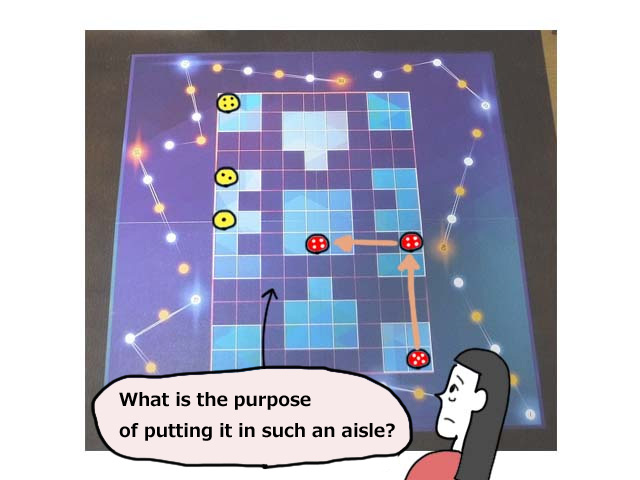
It's easy to put tokens in the room!
Hmm? No, wait ... What does it mean to put a token in the aisle when I can put numbers in the room so easily?
Is this a game which putting tokens in the aisle will work later?
This was also immediately intuitive. I didn't know the reason yet.
At Glux, the reasons for these intuitions are immediately apparent in the first game. The strength of one token and the importance of the tokens placed in the aisle are immediately realized at the first time.
For me, this quick flow from awareness to answer was the most interesting.
For example, Othello has a strategy of not taking a lot in the early and middle stages, which is intended to limit the position where the enemy can be placed. However, it is impossible to notice it at first sight unless you are a genius.
At Glux, I think it's easier to understand how to play well. Therefore, the entrance for beginners is wide.
But it's not a simple game at all. Whether the strategy can be used more accurately and effectively is another matter. It's easy to notice, but it seems to be insanely deep.
So every time I play, I think, "Oh, I should play like this," or "There are patterns like this."
Even in our simple play, we realized that "something looks good", so we took a detour and it worked after all. It's fun to learn gradually. GLUX is such a game with a wide frontage and a deep depth.
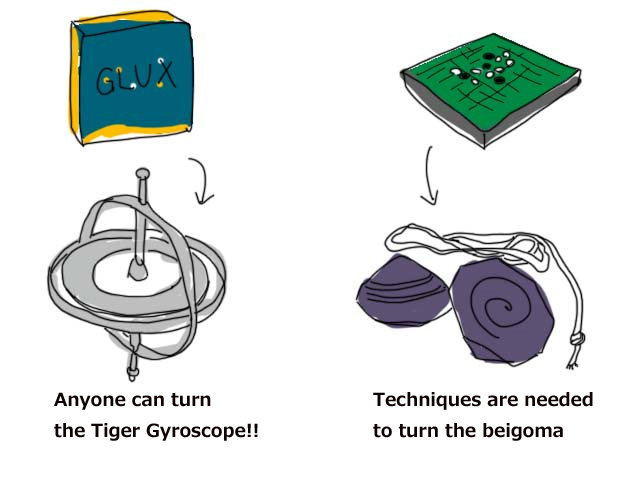
If Othello is a *beigoma, then Glux is a †Tiger Gyroscope.
You can easily understand why 1 is strong and why it is important to put it in the aisle, so please play it.
There may be many other strategies, but this is what we noticed.
By the way, even though it's a simple component with no theme, the siege battle comes to my mind while playing.
I have the image of hanging a ladder into an enemy castle.

I recommend this game.
*beigoma--Old Japanese toys. It's hard to turn. By the way, I can't turn it.
†Tiger Gyroscope--A scientific toy that applies the principle of the gyro effect. It was the main product of Tiger Shokai Co., Ltd., which was closed in 2015. they were exported to the United States in 1927.

